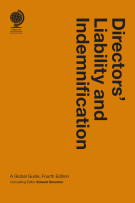Can knowledge management play a vital role in the success of a law firm?
18 March 2017

Author bio coming soon
In our latest blog, Jon Beaumont discusses whether access to knowledge has become easier or actually more difficult with the exponential increase in knowledge resources.
With a consensus largely across the legal sector that Knowledge Management (KM) can now play a vital role in the success of a law firm, what are we able to do in relation to systems that help facilitate a knowledge-sharing culture?
It should be noted initially that when we talk about "KM systems" we are largely not speaking of an actual single system which provides access to a Comprehensive store of a firm's knowledge. Whether by knowledge (or know-how) we mean documents, matter information, billing information or anything else pertinent to a firm's success, it will be rare (though not impossible) to have an all-encompassing single system. Thus, the actual systems or sources of knowledge within a firm may be numerous, even if some sort of single search tool, index or portal is placed around the systems (in itself often referred to as a "KM System"). This may be a customised or a standard third party solution or some other application (I am largely thinking SharePoint).
Law firms of all sizes will now usually have at least some repository of knowledge, but as rich knowledge sources have grown exponentially, it is arguable whether access to knowledge has become easier or actually more difficult. Systems aimed at law firms are certainly plentiful and whilst many use a similar search solution or application, the architecture placed on an out of the box product may vary hugely (this in turn massively determines usefulness).
At the turn of the millennium, KM systems may have been limited to a file-share (or lever arch binder) containing a firm's core precedent documents – or the "crown jewels" as more than one Senior Partner would inform me over time (matter information could often be restricted to a spreadsheet of names and contact details). These were guarded enthusiastically, with a regime that would only allow new-joiners very limited access, mid-termers slightly greater access and only when you were fully committed to a firm for life were you allowed to see virtually all documents (there would always be the odd one or two that would get locked away in the safe). Thankfully, Practical Law came along and illustrated that such documents were not overly dissimilar after all and the need to secure these diminished somewhat. Security is much more prominent then it was back then and has moved on from simple yes/no access to flexible models able to incorporate ethical walls, sensitivities and personal preferences. Any KM system must allow such flexible security application.
KM systems can now pull information form a whole myriad of external and internal sources, but we must ask ourselves what the purpose of this would be? I often see firms attempting to index what somebody may consider to be "knowledge" from a multitude of sources but aiming to do similar without a reasonably structured target, resulting in project failure. Attempting to create logical, efficient and intuitive access to knowledge is the key – very much quality over quantity. Unsuccessful launches of KM systems are unfortunately commonplace.
So to the buzz term within law firms at present of "Artificial Intelligence" or "AI". Could there possibly be an impact on KM systems resulting from AI for what we may consider to be somewhat of a static system for search and storage? The answer is most definitely "yes", but as always, we must tread with some caution. First and foremost, we must make sure that fundamentals of knowledge systems are in place (these being basic access to knowledge for users) before attempting to add further levels of complexity. More than a decade ago, Information Professionals, PSLs, IT, PAs and anybody with a spare few minutes were asked "to do some KM", as it grew in importance. Similarly, the same group of people (and anybody else employed seemingly in a non-lawyer role) are now bombarded with the recurring question "what are we doing with AI"? Lawyers need to understand that this is not a new magic tool or overnight fix. AI has huge possibilities, but time and monetary resources need to be invested to harvest its benefits. Serious thought should also be given to the actual incorporation of AI into a knowledge system. Alex Smith in his piece on AI recently used an analogy regarding the Hubble telescope (Smith, 2016), which is incredibly relevant.
The signs are that AI will be wonderfully beneficial and we are also now seeing vendors of search and system tools presenting roadmaps illustrating their incorporation of AI in future releases. A large number of firms are still unprepared to invest here, but the concern must be that they will end up behind the curve. The good news is that some organisations are certainly challenging this view with investigation into the (slightly) unknown.
In summary, when examining the possibility, creation or development of a KM system, significant points to consider will be:
- Scope – what do you want to achieve, but more importantly, what do users and the firm want to achieve?
- Cost – whilst this doesn't have to be a bottomless pit, be wary of attempting to do things on the cheap.
- Resource – for those with only minimal time allocated to KM-related activities, be realistic on what may be achieved.
- AI – certainly worth consideration, but at this time not having huge impact on a system itself (more so as a standalone tool).
- Futureproofing – as nothing in the world of KM is static, the same should apply to our systems – the ability to adapt, improve and develop a system is vital.
- Security – once again flexibility is key, if a system cannot allow the apportionment of potentially complex security methods then it is already redundant.
Jon Beaumont is Knowledge Systems Advisor, Global Knowledge Management, for Shearman & Sterling
Smith, A (2016) "Big data technology, evolving knowledge skills and emerging roles". Legal Information Management 16(2016), pp. 219-224.













Any comments - send us an email